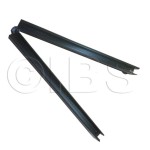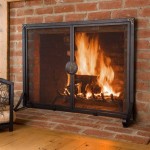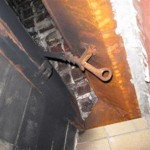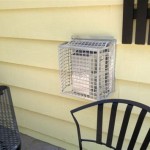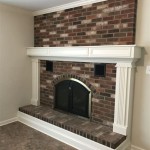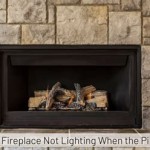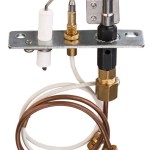Ideas for Stone Fireplaces: Design and Implementation
Stone fireplaces have long been revered as focal points in homes, offering a blend of aesthetic appeal, warmth, and a sense of timelessness. The natural variations in stone color, texture, and shape provide a unique character that is difficult to replicate with manufactured materials. Considering the inherent design flexibility of stone, the possibilities for fireplace aesthetics are extensive, ranging from rustic and traditional to sleek and contemporary. This article explores various design ideas for stone fireplaces, examining the key considerations involved in their implementation.
Selecting the Right Stone Type
The choice of stone significantly impacts the overall look and feel of a fireplace. Several factors should influence this decision, including the existing architectural style of the home, the desired aesthetic, and the functional requirements of the fireplace. Some of the most commonly used stone types for fireplaces include fieldstone, river rock, stacked stone, and ledgestone.
Fieldstone, typically sourced directly from the surrounding environment, offers a rustic and natural appearance. Its irregular shapes and varied colors create a visually interesting texture, making it well-suited for homes with a country or farmhouse aesthetic. The installation process can be more labor-intensive due to the need to carefully select and arrange each stone. The size and shape variations require skilled craftsmanship to achieve a balanced and aesthetically pleasing result.
River rock, characterized by its smooth, rounded surface, provides a more polished and refined look compared to fieldstone. Its natural color variations, ranging from grays and browns to reds and blues, create a subtle yet attractive visual effect. River rock is often used in contemporary or transitional designs, offering a natural element without appearing overly rustic. The smooth texture also makes it easier to clean and maintain.
Stacked stone, available in both natural and manufactured varieties, offers a clean and linear appearance. Its uniform shapes and sizes make it relatively easy to install, resulting in a contemporary and streamlined aesthetic. Stacked stone is often used in modern homes, providing a striking visual contrast against smooth walls and minimalist decor. The manufactured versions offer a wider range of colors and textures, allowing for greater design flexibility.
Ledgestone, similar to stacked stone, features thin, flat stones that are arranged horizontally to create a textured surface. Its natural variations in color and texture add depth and visual interest. Ledgestone is a versatile option that can be used in a variety of architectural styles, from rustic to contemporary. It is often used to create a dramatic focal point in a room, particularly when combined with a contrasting hearth.
Beyond these common types, other stone options exist, including granite, marble, limestone, and slate. Each stone possesses unique characteristics in terms of color, texture, and durability, allowing for a customized fireplace design. Granite, for example, offers exceptional durability and heat resistance, making it a suitable choice for high-heat applications. Marble, known for its elegant appearance and smooth texture, adds a touch of luxury to any space. Limestone, with its warm and earthy tones, provides a natural and inviting atmosphere. Slate, with its dark and dramatic colors, creates a bold and sophisticated statement.
Design Considerations for Stone Fireplaces
Designing a stone fireplace involves careful consideration of several factors, including the fireplace size and shape, the surrounding architectural elements, and the desired aesthetic. The size of the fireplace should be proportional to the size of the room to create a balanced and harmonious design. A fireplace that is too large can overwhelm the space, while one that is too small can appear insignificant.
The shape of the fireplace can also significantly impact its visual appeal. A traditional rectangular fireplace is a classic and versatile choice, while a curved or arched fireplace can add a touch of elegance and sophistication. The use of different shapes and sizes of stones can further enhance the visual interest of the fireplace. For example, incorporating larger stones at the base of the fireplace can create a sense of stability and grounding, while using smaller stones towards the top can create a lighter and more airy feel.
The surrounding architectural elements should also be considered when designing a stone fireplace. The style of the fireplace should complement the existing architectural features of the home. For example, a rustic stone fireplace would be well-suited for a log cabin or a farmhouse, while a sleek and modern stone fireplace would be more appropriate for a contemporary home. The colors and textures of the surrounding walls and flooring should also be taken into account to create a cohesive and harmonious design.
The desired aesthetic is another crucial consideration in fireplace design. The choice of stone, the shape of the fireplace, and the surrounding architectural elements should all contribute to the overall desired aesthetic. A rustic aesthetic can be achieved by using fieldstone or river rock, while a modern aesthetic can be achieved by using stacked stone or ledgestone. The addition of decorative elements, such as mantels, shelves, and artwork, can further enhance the desired aesthetic.
Furthermore, incorporating a hearth, the non-combustible area in front of the fireplace opening, is a critical safety and design element. The hearth’s size and material should comply with local building codes and effectively protect the surrounding floor from embers and heat. Common hearth materials include stone, tile, brick, and concrete. The hearth’s design should complement the fireplace’s overall aesthetic, creating a seamless and visually appealing transition.
Implementation and Installation of Stone Fireplaces
The installation of a stone fireplace requires careful planning and execution to ensure both safety and aesthetic appeal. The process typically involves several stages, including preparing the existing structure, installing the firebox and flue, and applying the stone veneer. It is highly recommended to engage qualified professionals for this phase. Improper installation can lead to structural issues, fire hazards, and aesthetic imperfections.
Before beginning the installation, it is essential to ensure that the existing structure can support the weight of the stone fireplace. Stone is a heavy material, and the weight of the fireplace can place significant stress on the foundation and framing of the home. If the existing structure is not strong enough to support the weight, it may be necessary to reinforce it. A structural engineer can assess the structural capacity and recommend appropriate reinforcement measures.
The installation of the firebox and flue is a critical step in the process. The firebox is the chamber where the fire is built, and the flue is the chimney that vents the smoke and gases out of the home. The firebox and flue must be properly sized and installed to ensure safe and efficient operation. Local building codes and manufacturer's specifications should be strictly adhered to. A qualified HVAC or fireplace installer can ensure that the firebox and flue are installed correctly.
The application of the stone veneer is the final step in the installation process. The stone veneer is the decorative layer of stone that is applied to the exterior of the fireplace. The stone veneer can be either natural or manufactured. Natural stone veneer is more expensive than manufactured stone veneer, but it offers a more authentic and natural appearance. Manufactured stone veneer is less expensive and easier to install, and it is available in a wide range of colors and textures. The stone veneer should be installed according to the manufacturer's instructions and using appropriate adhesives and fasteners. A skilled mason or stone veneer installer can ensure that the stone veneer is installed correctly and aesthetically pleasing. The process involves mortar application, stone placement in a desired pattern, and ensuring each stone is level and securely adhered to the backing material.
In addition to the structural and technical aspects of the installation, it is also important to consider the aesthetic details. The choice of grout color and the spacing between the stones can significantly impact the overall look and feel of the fireplace. A contrasting grout color can highlight the individual stones, while a similar grout color can create a more seamless and unified appearance. The spacing between the stones should be consistent and even to create a visually appealing design.
The incorporation of a mantel, a shelf above the fireplace opening, can further enhance the aesthetic appeal of the fireplace. The mantel can be made of wood, stone, or metal, and it can be either simple or ornate. The mantel can be used to display artwork, candles, or other decorative items. The height and depth of the mantel should be proportional to the size of the fireplace. The style of the mantel should complement the overall aesthetic of the fireplace and the surrounding room.
Finally, proper maintenance and cleaning are essential to preserving the beauty and functionality of a stone fireplace. Regular cleaning will help prevent the buildup of soot and creosote, which can be flammable. The fireplace should be inspected regularly for cracks or other damage. Any necessary repairs should be made promptly to prevent further damage. A professional chimney sweep should be hired to clean and inspect the flue at least once a year. This will help ensure that the flue is clear of obstructions and that the fireplace is operating safely and efficiently.

50 Sensational Stone Fireplaces To Warm Your Senses

50 Sensational Stone Fireplaces To Warm Your Senses
:strip_icc()/Screenshot2021-10-19at09-16-46Portfolio-AmyBartlamPhotography-1f35ea9ec29846779a2d62b42676eff9.png?strip=all)
20 Best Stone Fireplace Ideas

25 Stone Fireplace Ideas For A Cozy Nature Inspired Home Surround Country

Stone Fireplace Design And Remodel

50 Sensational Stone Fireplaces To Warm Your Senses

28 Cozy Stone Fireplace Ideas To Make A Statement White Mantels Fireplaces

12 Stacked Stone Fireplace Ideas For Optimal Coziness

Stone Fireplace Design And Remodel

40 Stone Fireplace Designs From Classic To Contemporary Spaces Decoist
Related Posts

